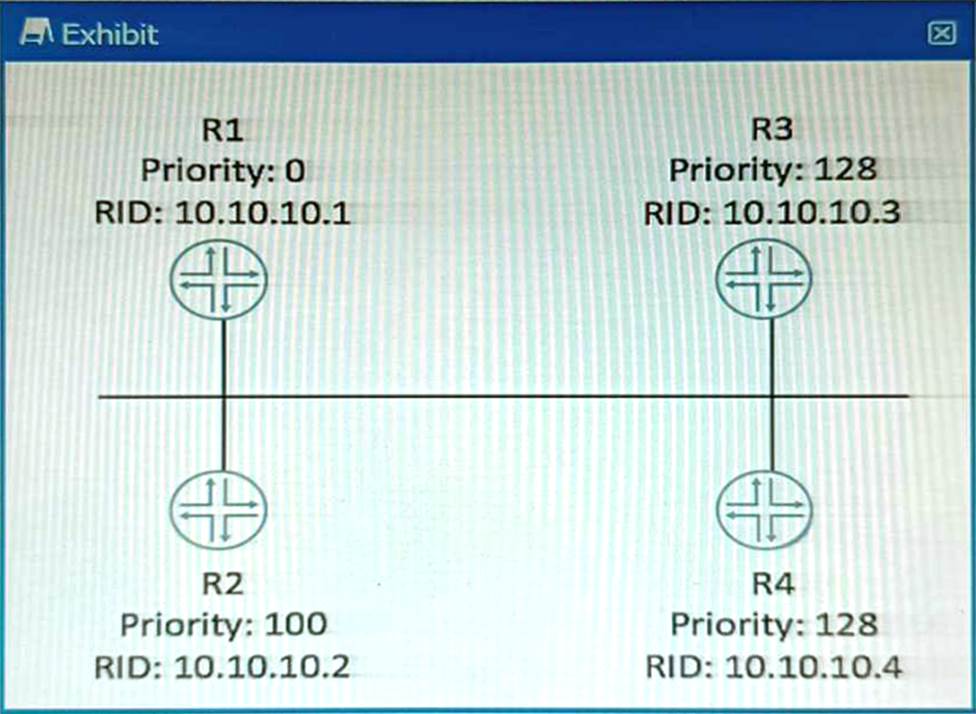- All Exams Instant Download
Which router will become the OSPF BDR if all routers are powered on at the same time?
Exhibit.

Which router will become the OSPF BDR if all routers are powered on at the same time?
A . R4
B . R1
C . R3
D . R2
Answer: A
Explanation:
OSPF DR/BDR election is a process that occurs on multi-access data links. It is intended to select two OSPF nodes: one to be acting as the Designated Router (DR), and another to be acting as the Backup Designated Router (BDR). The DR and BDR are responsible for generating network LSAs for the multi-access network and synchronizing the LSDB with other routers on the same network1.
The DR/BDR election is based on two criteria: the OSPF priority and the router ID. The OSPF priority is a value between 0 and 255 that can be configured on each interface participating in OSPF. The default priority is 1. A priority of 0 means that the router will not participate in the election and will never become a DR or BDR. The router with the highest priority will become the DR, and the router with the second highest priority will become the BDR. If there is a tie in priority, then the router ID is used as a tie-breaker. The router ID is a 32-bit number that uniquely identifies each router in an OSPF domain. It can be manually configured or automatically derived from the highest IP address on a loopback interface or any active interface2.
In this scenario, all routers have the same priority of 1, so the router ID will determine the outcome of the election. The router IDs are shown in the exhibit as RID values. The highest RID belongs to R4 (10.10.10.4), so R4 will become the DR. The second highest RID belongs to R3 (10.10.10.3), so R3 will become the BDR.
Reference:
1: OSPF DR/BDR Election: Process, Configuration, and Tuning
2: OSPF Designated Router (DR) and Backup Designated Router (BDR)
Latest JN0-351 Dumps Valid Version with 110 Q&As
Latest And Valid Q&A | Instant Download | Once Fail, Full Refund
Subscribe
Login
0 Comments
Inline Feedbacks
View all comments

